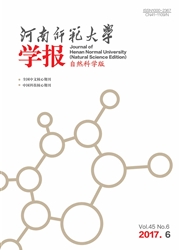

 中文摘要:
中文摘要:
目的比较在困难气道患者行双腔支气管插管时,使用纤支镜与可视喉镜插管的差异。方法择期行胸腔镜手术患者48例,ASA评级I~Ⅱ级,插管困难程度分级(Mallampati分级)Ⅲ-Ⅳ级,回顾性均分为纤支镜组和可视喉镜组。纤支镜组直接运用纤支镜先引导双腔支气管插入气道,再行纤支镜对位;可视喉镜组先运用可视喉镜插管,再行纤支镜对位。观察两组的插管时间、一次性插管成功率、·心率(HR)及收缩压(SBP)的变化、口腔咽喉部损伤情况及术后咽喉部不适感。结果两组在插管时间上差异无显著性;一次性成功率纤支镜组为100%,可视喉镜组为95%,差异无显著性(P〉0.05);插管前后可视喉镜组HR、SBP变化幅度较纤支镜组明显增加,差异有显著性(P〈0.05);可视喉镜组口腔咽喉部损伤例数(11例)比纤支镜组多(2例),差异有显著性(p〈0.05);可视喉镜组术后咽喉不适感患者(14例)多于纤支镜组(7例)(P〈0.05)。结论在困难气道行双腔支气管插管中直接使用纤支镜引导及对位比先使用可视喉镜插管后运用纤支镜对位具有损伤更小、刺激更轻等优势,对患者更有利,是困难气道双腔支气管插管的首选方法。
 英文摘要:
英文摘要:
Objective To compare the differences between using bronchoscopy or video laryngoscopes to do double- lumen tube intubation in patients with difficult airway. Methods 48 patients undergoing elective thoracoscopic surgery (ASA I - II, Mallampati classification III- IV)were randomly divided into two groups (bronchoscopy group and video la- ryngoscopes group) ,with 24 eases in each group. In bronchoscopy group,broncboseopy was directly used to guide the doub- le-lumen tube bronchial intubation, and then to check the placement of the tube ; In video laryngoscopes group, video laryn- goscopy was first used to guide the intubation,and then the placement of the tube was checked by bronehoscopy. The intuba- tion time,one-time intubation success rate, heart rate (HR) and systolic blood pressure (SBP) ,oral throat injury and post- operative throat discomfbrt were observed in both groups. Results There were no statistical differences between broncho- scopy group and video laryngoscopes group in the intubation time or one-time success rate (P 〉 0.05 ) ; the HR and SBP af- ter intubation were higher in video laryngoscopes group than in broncboscopy group( P 〈 0. 0.5 ) ;there were more oral throat injury cases( 11 vs 2)(P 〈 0. 01 ) and postoperative throat discomfort patients (P 〈 0. 05 ) in video laryngoscopes group than in bronchoscopy group( 14 vs7 ). Conclusion For patients with difficult ail'way, using bronchoscopy to guide the double-lumen bronchial intubation directly had less injury and stimulation than using video laryngoscopy.
 同期刊论文项目
同期刊论文项目
 同项目期刊论文
同项目期刊论文
 期刊信息
期刊信息
